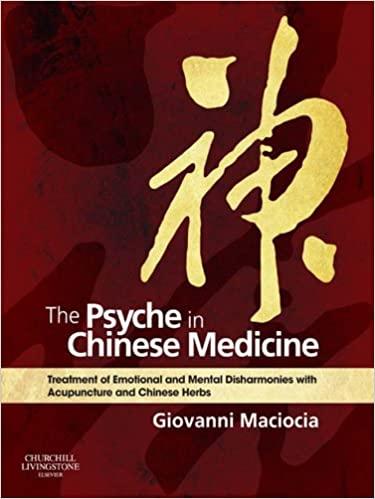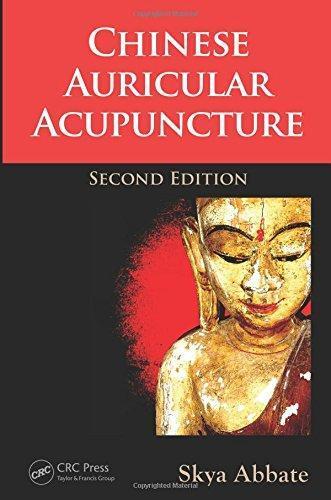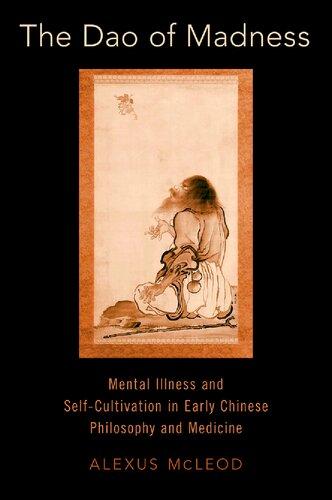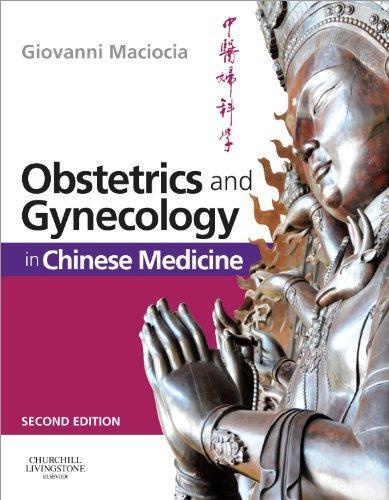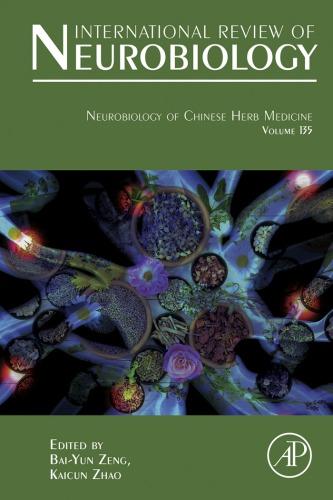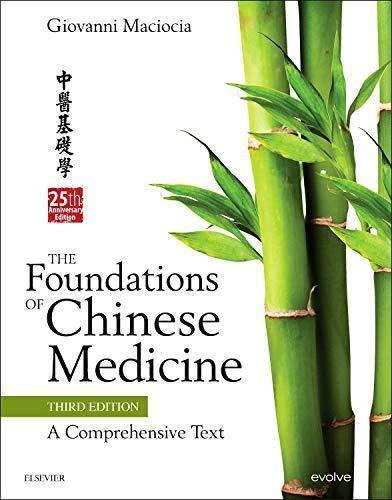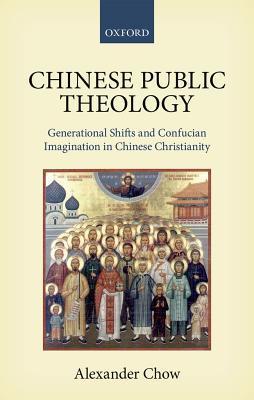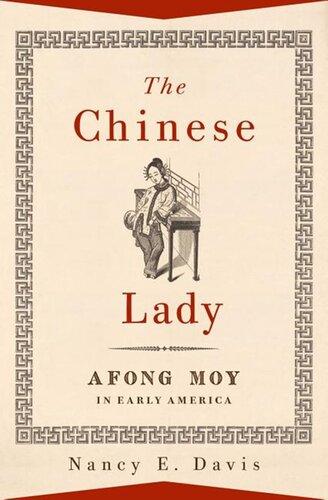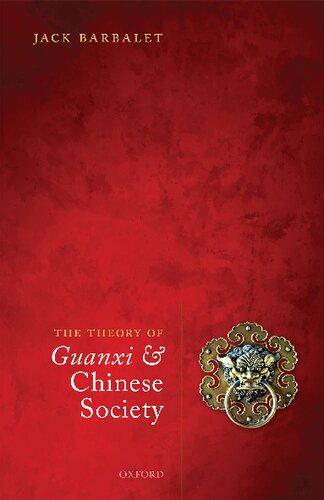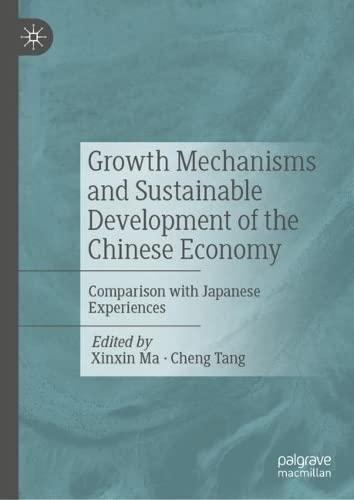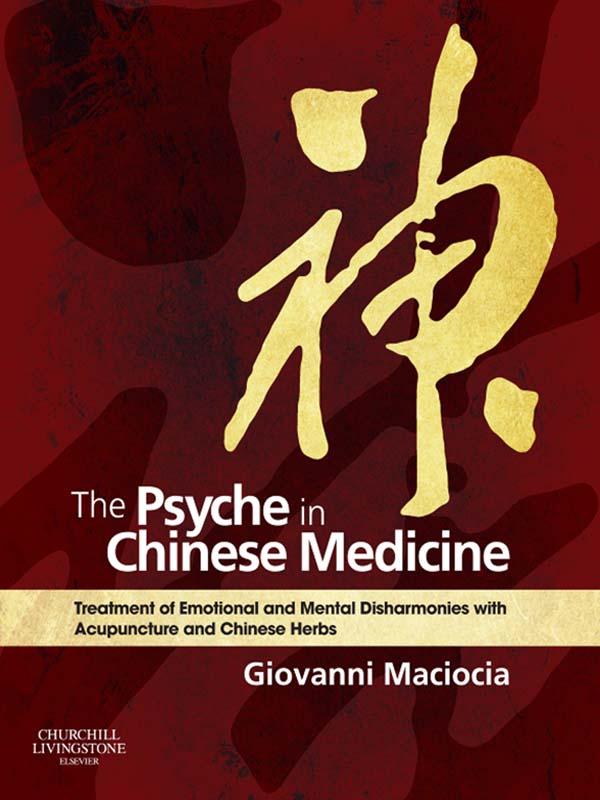PREFACE
Theseedsforthewritingofthisbookwereplanted35yearsagowhen I first started practicing acupuncture. I can say that not a day went by in my practice that I did not question the nature of Shen and its meaning in the context of modern Western patients. After practicing for only a few weeks, it became obvious to me that very many patients presented with emotional suffering which was either at the root of their medical problem oracontributoryfactortoit.
I also started noticing straight away that acupuncture had a profound influence on the emotional and mental state of my patients, alleviating depression and anxiety even when the patient may have come simply to have a shoulder-joint problem fixed. I came to experience for myself the “unityofbodyandmind”thatmyteacherstalkedabout.
In the past 10 years or so, I have been totally absorbed in the study of the Shen in Chinese medicine seen in its historical, social and philosophical contexts and, as a result, my research developed along four strands:
.ThestudyofConfucianphilosophy
.AresearchintotheinfluenceofConfucianphilosophyonChinese medicineandparticularlyonitsviewofthe Shen andemotions
.AresearchontheemotionsinWesternphilosophy
.AnanalysisofthedifferencesbetweentheconceptofSelfintheWestand inChina.
I have been absorbed by the above studies because I have come to realize that Confucianism had a much bigger influence on Chinese medicine than we think. In my opinion, we tend to overemphasize the influence of Daoism on Chinese medicine and overlook that of
Confucianism.OnesimplereasonwhytheinfluenceofDaoismonChinese medicine is overemphasized is probably because whenever we read the word“Dao ” in Chinese texts, we assume it reflects the Daoist philosophy. However, the Confucians also constantly refer to the Dao . This is discussedinChapter15.
In particular, I believe that the concept of Self in Chinese medicine and its view of emotions is Confucian. These ideas are discussed in Chapters14and15which thereader isurgedtoread (although they can be read quite separately from the other chapters and not necessarily in the order in which they appear). I do realize that these two chapters do not make “light reading” but I do urge the reader to read them carefully as the ideasexpoundedthereinpermeatethewholebook.
WhenadaptingChinesemedicinetoWesternpatientsintheemotional and mental field, we should be aware of such differences in the concept of SelfandintheviewofemotionsbetweentheWestandChina.
The Self as an individual, autonomous, inward-looking self, center of our emotional life simply does not exist as a concept in Confucianism: under the Confucian influence, the Chinese self is socially determined. As Fingarettesays: 1
I must emphasize that my point is not that Confucius words are intended to exclude reference to the inner psyche. He could have done this if he had such a basic metaphor in mind, had seen its plausibility, but on reflection, had decided to reject it. But this is not what I am arguing here. My thesis is that the entire notion never entered his head. The metaphor of an inner psychic life, in all its ramifications so familiar to us, simply is not present in the Analects, not even as a rejected possibility. Hence when I say that in the above passages using Yu (the opposite of Ren indicating anxiety, worry, unhappiness) there is no reference to the inner, subjective states. I do not mean that these passages clearly and explicitly exclude such elaboration, but that they make no use of it and do not require it for intelligibility or validity.
The Self as an individual, autonomous, inward-looking self, center of our emotional life, is the result of a 2500-year evolution of thought in Westernphilosophy,startingfromancientGreecedowntoFreudandJung: the journey from “soul” to “self” in Western civilization was a long one, andonethatdidnottakeplaceinChina.
The Chinese (Confucian) view of the Self as socially constructed is evidentfromthecharacterfor ren ,theConfucianqualitythatissometimes erroneously translated as “compassion” or “benevolence”; this character shows a “person” and the number “two” (see Figures 15.2 , 15.4 and 15.5 inChapter15).Amessays: 2
This etymological analysis underscores the Confucian assumption that one cannot become a person by oneself – we are, from our inchoate beginnings, irreducibly social. Fingarette has stated the matter concisely: ‘For Confucius, unless there are at least two human beings, there can be no human being’.
Ames therefore clearly thinks that ren is not a psychological disposition of an individual self, a concept which simply does not exist in Confucianphilosophy.Fingarettestatesveryclearly: 3
Ren seems to emphasize the individual, the subjective: it seems in short a psychological notion. The problem of interpreting ren thus becomes particularly acute if one thinks, as I do, that it is of the essence of the Analects that the thought expressed in it is not based on psychological notions. And, indeed, one of the chief results of the present analysis of ren will be to reveal how Confucius could handle in a non-psychological way basic issues which we in the West naturally cast in psychological terms.
The implication of the above passages is profound: it means that the concept of an individual self as an autonomous psychological center of consciousness and whose emotional life is influenced by the complex of
past experiences of such an individual, autonomous self, simply did not existinConfucianphilosophyand,byextension,inChinesemedicine.The Chinese self is a social construct and the result of family and social relationships.
This means that the modern Western view of an individual psychological self whose emotional life is affected deeply by our childhood experiences is absent in Chinese medicine. For example, Chinese medicine considers that anger makes Qi rise and the correct treatment therefore consists of making Qi descend but it does not delve into the person’s psyche to probe whether the anger may be due to a projection that has its roots in sibling relationships (for example) or whetheritmaybeduetoathwartedmanifestationofguilt.
To give another example, I find that anger is often a manifestation of a shadow projection. When we see in others traits that make us angry, it often (although not always) indicates that we are projecting our shadow onto the other person and that their traits that make us angry are traits of our own shadow. Chinese medicine had no such psychological insights precisely because such insights require a concept of an inner-life, autonomous,individualselfthatChineseculturedoesnothave.
That might also explain the omission of many emotions from the list usually presented in Chinese medicine. For example, there is no envy, prideorguilt.Oneexplanationofthisomissionisthatthesethreeemotions require a concept of self (we are proud of our self, we feel guilty about our self)thatisdifferentinChinesemedicineandculture.
I have personally a deep interest in Jungian psychology and always try to see emotional suffering of a patient in the light of their projections, complexes, relationship with their animus/anima and shadow projection. Suchaviewgivesmeaperspectiveofapatient’spsycheandemotionsthat I believe Chinese medicine simply does not have. Chinese medicine correctly identifies the emotion involved in a patient’s suffering but I have neverseeninaChinesebook(modernorancient)anymentionthatsuchan
emotion may be due to that person’s mother being cold and undemonstrativeinheraffection(forexample).
I believe that real healing from emotional suffering can take place only when the self is analyzed deeply with a conscious (and extremely difficult) effort of the patient. Of course, that is not to say that every patient should undergo psychotherapy as psychological problems occur with different depths and not all require deep psychotherapy. Moreover, Chinese medicine always has a positive role to play in alleviating emotional suffering. It creates a space where healing can take place, whetherthepatientdelvesintohis/herpsycheornot.
Chinese medicine alleviates emotional suffering in many different ways and I personally feel we should not adhere rigidly to a scheme. If the patient is willing to delve deeply into his/her psyche in order to really get to the root of their suffering, then Chinese medicine provides a wonderful complement to this work. I believe it can also greatly shorten the course of therapynecessary.
An interesting passage by Xu Chun Fu (1570) discusses the combination of herbal treatment by a doctor with incantations by a shaman. He said that a pre-existing weakness in the person’s Qi made an attackbyanevilspiritpossibleandheadvocatedcombiningherbaltherapy withincantationinaveryinterestingpassage: 4
If these two methods of treatment are combined [herbal therapy and incantation], inner and outer are forged into a whole producing a prompt cure of the illness. Anyone who engages an exorcist and avoids the application of drugs will be unable to eliminate his illness, for a principle is lacking that could bring about a cure. He who takes only drugs and does not call upon an exorcist to drive out existing doubts, will be cured, but relief will be achieved slowly. Consequently the inner and outer must be treated together; only in this way is rapid success possible.
Theclassificationof“inner”and“outer”methodsoftreatment(herbal drugs and exorcisms, respectively) is interesting and his advocating a combinationofthesetwomethodsissignificant:itistemptingtosubstitute “psychotherapist” for “exorcist” and infer that Xu Chun Fu advocated combining a physical therapy such as herbal medicine with psychotherapy. Itisalsointerestingtonotethedifferenceinoutcomewheneachtherapyis used: if one goes only to an exorcist he or she “will be unable to eliminate the illness ”, whereas if one goes to a herbalist, he or she “will be cured ” (albeitmoreslowly).
If the patient is not prepared to undergo psychotherapy, Chinese medicine helps greatly by alleviating emotional suffering. It also creates a space where Qi is flowing, the Mind (Shen ) and Ethereal Soul (Hun ) are more coordinated in their activities, the Corporeal Soul (Po ) is animating thebodybetterandtheWill-Power(Zhi )isstrong.
I also noticed another phenomenon when treating patients with mental-emotional problems. The treatment seems to make people more aware and more receptive to emotional work spontaneously. The treatment modulates the relationship between the Mind and the Ethereal Soul, relieving depression and anxiety; however, beyond the mere relief of emotional suffering, the treatment seems to nourish the Mind and regulate the Ethereal Soul so that the individual is more open and receptive. For example, I have noticed several times that, after a series of treatments, a patient may take up an art form that they have neglected for years, for exampleplayinganinstrumentorpainting.
The very way Chinese medicine sees emotions as forces that disrupt the proper direction of movement of Qi (“anger makes Qi rise, fear makes Qi descend, etc.”) reflects, in my opinion, the absence of an individual, psychological self in Confucian philosophy. In other words, anger makes Qi rise, independently from a self: it is an objective force that disrupts the movement of Qi and the cognitive part of the Mind plays no role in it. The rising of Qi from anger generates a picture of disharmony that is at once physical (headaches, dizziness) and emotional (irritability, outbursts of
anger) and it does not really even require the concept of an individual self asthecenterofconsciousness.
In my opinion, the way in which Chinese medicine sees emotions is Confucian: they are bodily and psychic forces that cloud reason and obscure our human nature. As we know from Western views on emotions, these are far more than that: to some, they are an essential way in which our psyche works and what gives meaning to our life, from both an existential and a purely neurological point of view. As discussed in Chapter 14 , the development of the higher cortex also depends partly on thelimbicsystem.
One particular feature of the book is the space dedicated to the relationship between the Mind (Shen ) and Ethereal Soul (Hun ). Over the years of dealing with mental-emotional problems, I have come to attach great importance to the role of the Ethereal Soul and its relationship with the Mind. For example, I think that every case of depression is characterized by a deficient movement of the Ethereal Soul (and “manic behavior”byanexcessivemovementoftheEtherealSoul).
More and more I see the relationship between the Mind and Ethereal Soulasamirrorofthatbetweenthecortexandthelimbicsystem(although theMindcannotbereducedsimplytothecortexortheEtherealSoultothe limbic system). In particular, the prefrontal cortex seems to be the arena of theinterplaybetweentheMindandtheEtherealSoul.
The prefrontal cortex (located just behind the forehead) is responsible for the executive functions, which include mediating conflicting thoughts, making choices between right and wrong or good and bad, predicting future events, and governing social control – such as suppressing emotional or sexual urges. The basic activity of this brain region is considered to be orchestration of thoughts and actions in accordance with internalgoals.
These functions depend very much on the relationship between the Mind and the Ethereal Soul and, especially, on the normal control and integrationexercisedbytheMindtowardstheEtherealSoul.
In my opinion, a disturbance of the relationship between Mind and Ethereal Soul is implicated in modern diseases such as autism (in which the movement of the Ethereal Soul is insufficient) or attention deficit hyperactivity disorder (in which the movement of the Ethereal Soul is excessive and the Mind’s control and integration of the Ethereal Soul is insufficient).
After researching extensively on the emotions in Western philosophy and modern neurophysiology, and on the influence of Neo-Confucianism on Chinese medicine, I have come to the (perhaps controversial) conclusion that the “emotions” we talk about in the West are simply not theemotionsofChinesemedicine.
As discussed in Chapter 14 , emotions are, on the one hand, what givesmeaningtoourlifefromanexistential,spiritualpointofview;onthe other hand, in a modern neurophysiological sense, they are an essential part to the functioning of the cortex and our cognitive faculties. Emotions assist reasoning. 5 This is a far cry from the Chinese view of emotions as factors that “cloud” the Mind and obscure our human nature: Sartre and Nietzscheforastartwouldsaythatemotions are ourhumannature.
It could be argued that it is emotions, not reason, that distinguishes us as human beings. Far from being factors that make us lose our human nature (as the Neo-Confucianists say), emotions are our human nature. For betterorforworse,emotionsmakeus“human”.Wecanbedrivennotonly by hatred but also by deep love, empathy and compassion which define us ashumanbeings.
I have come to the conclusion that the “emotions” as considered in Chinese medicine are merely pathologies of Qi : anger is the arousal of Qi with its psychological and (most of all) physical manifestations. They are pathologies of Qi that are disengaged from the self because the Confucian self is not the individualized, inward-looking, autonomous self of Western culture.
Another momentous consequence of the different views of the self in ChinaandtheWestisthatChinesemedicinetotallylacksaviewoftheself
as a psychological center formed from birth, through our childhood experiences and adult life with all its unconscious material, projections, complexesanddefences.
That is not to say that Chinese medicine cannot play a major role in the interpretation and treatment of deep disturbances of the self: indeed it can. But this work will require the painstaking effort, research and clinical enquiry of generations of Chinese medicine practitioners. I also believe that, due to the different concepts of the self in China and in the West, most of this work will have to be carried out by Western practitioners. But for this process to happen, we need to be conscious of the Confucian influence on Chinese medicine, take what applies to us and discard what doesnot,andabandonanunrealisticviewofChinesemedicine.
By “unrealistic” view of Chinese medicine, I mean three things. First, a somewhat nebulous view of Qi as the basis of all pathology and treatment. Every mental-emotional disharmony can be diagnosed and treatedasadisharmonyofQi:thatdoesnotmeanthatallwillbecured.
Second, in the process of adapting Chinese medicine to the West, to WesternpatientsandtoourWesternconceptofself,weneedtostaytrueto the roots of Chinese medicine and avoid attributing powers to Chinese medicinethat(inmyopinion)itcannothave.
Third, having said that we need to stay true to the roots of Chinese medicine, it is equally important that we see through the influence of Confucianism on Chinese medicine and therefore discard some of the views that do not apply to Westerners and a Western concept of self. I feel thisisveryimportant:ifwepersistinhavinga“romantic”viewofChinese medicine and take as gold nuggets everything we read in the classics without seeing its Confucian veneer, we will never accomplish the task of trulyadaptingChinesemedicinetotheWesternworld.
Such work is already being done by many of our colleagues and, although ideas often diverge, together we can develop a Chinese medicine thatistrulyintegratedintheWestandthataddressestheemotional,mental andspiritualissuesofWesterners.
As in my previous books, contrary to all other English-language authors, I continue to translate Shen (of the Heart) as “Mind” rather than “Spirit”, reserving the term “Spirit” for the complex of the five, i.e. Mind, Ethereal Soul, Corporeal Soul, Intellect and Will-Power. The reasons for this are explained in Chapters 1 and 2 . Please note that I am not saying that the word “shen ” cannot mean “spirit”: of course it does. What I am saying is that, based on the functions of the Shen of the Heart, “Mind” is a better translation of it and call “Spirit” the total of the five. The problem is not merely semantic: if we call the Shen of the Heart “Spirit” we overlook the role of the Ethereal Soul, Corporeal Soul and Will-Power in mental, emotionalandspiritualproblems.
To see this from a Jungian perspective, we can say that the Shen of the Heart is the ego while the total of the five (and especially Mind and EtherealSoultogether)istheSelf.
Interestingly, in mental illness the Shen of the Heart is obstructed but what is obstructed is the Mind, not the Spirit. We can seen this clearly in thelivesofverymanygreatartistswhose Shen oftheHeartwasobstructed but whose spirit soared to produce masterpieces of universal, spiritual value.
In this book, I deliberately restrict the conditions treated to the few that account for the overwhelming majority of mental-emotional problems we see, i.e. depression, anxiety and insomnia. To these, I added a few others and notably bipolar disorder and attention deficit hyperactivity disorder.
As I have done in my last book, the second edition of the Practice of Chinese Medicine ,IreportbothWesternandChineseclinicaltrialstogive the reader a general idea of the clinical use of acupuncture and herbs. In each chapter, the section on “Modern Chinese Literature” reports a few clinical trials conducted in China. Most of these trials are conducted to a standard that would not be acceptable: however, they are reported to show thetreatmentprincipleadoptedbymodernChinesedoctors.
Both Western and Chinese clinical trials suffer from flaws. Chinese trials often suffer from poor design to a standard that would not be accepted in the West. On the other hand, many of the Western clinical trials, although well designed, suffer from other flaws, often to do with the choice of treatment (points or formulae). An example of a Western trial suffering from poor design from the point of view of Chinese medicine could be that of a trial on the use of Chinese herbal medicine in the treatment of bipolar disorder (see Chapter19 ). One such trial selected the formula Xiao Yao San Free and Easy Wanderer Powder , a very strange choiceindeedforthetreatmentofbipolardisorder.
Another example of poor design is that of a clinical trial on depression after stroke using only five points (P-6 Neiguan, Du-26 Renzhong, Du-20 Baihui, Yintang, and SP-6 Sanyinjiao) and the same ones in every patient. Moreover, the points were used on the “affected” side: this is a strange choice as, if the points were chosen to treat the depression rather than the paralysis resulting from stroke, it is not clear whytheywouldbeusedonlyontheaffectedside(seeChapter16).
As in my previous books, I report Chinese herbal formulae as they were formulated in China. This means that many formulae will contain animal or mineral products. As legislation in herbal medicine differs from country to country, the reader is urged to familiarize him or herself with the laws of their country. Some substances used are illegal for reasons to do with protection of endangered species (animal or vegetable) and some to do with animal cruelty. Again, I present the formulae as they were in Chinese books so that the reader can make intelligent substitutions of unacceptable ingredients. For this reason, Appendix 2 lists suggested substitutionsformineralandanimalsubstances.
Appendix 4 explains some of the treatment principles listed in the book when these are not self-evident; for example, the difference between “rootingtheEtherealSoul”and“settlingtheEtherealSoul”.
Finally, the reader is urged to read the “Epilogue” that concludes the book. In it, I describe the issues I wrestled with over many years when
treating patients suffering from emotional turmoil and I propose my own ideasabouttheintegrationofChinesemedicineintoaWesternpractice.
My study of emotions in Western philosophy and in modern neurophysiology has led me to realize that emotions are far more than just the causes of disease envisaged by Chinese medicine. Far from obscuring our human nature, as the Neo-Confucianists tell us, they define our human nature and give meaning to our life. Together we need to develop a Chinese medicine that is based on a Western (rather than Confucian) concept of self and a view of the emotions that sees them not only as causes of disease but also as psychic factors that define us as human beings.
GiovanniMaciocia
Santa Barbara, April 2008
ENDNOTES
FingaretteH. Confucius – The Secular as Sacred .ProspectHeights, Illinois:WavelandPress;1972.
AmesRT,RosemontH. The Analects of Confucius – A Philosophical Translation .NewYork:BallantineBooks;1999.
Confucius–TheSecularasSacred,p.37.
UnschuldP. Medicine in China – A History of Ideas .Berkeley:University ofCaliforniaPress;1985.
DamasioA. Descartes’ Error – Emotion, Reason and the Human Brain . London:PenguinBooks;1994.
NOTEONTHETRANSLATIONOFCHINESE MEDICALTERMS
The terminology used in this book generally follows that used in the second edition of Foundations of Chinese Medicine, Obstetrics and Gynaecology in Chinese Medicine, Diagnosis in Chinese Medicine and the second edition of the Practice of Chinese Medicine . As in those books, I have opted for translating all Chinese medical terms with the exception of Yin,Yang,Qiand cun (unitofmeasurement).
I have also continued using initial capitals for the terms which are specific to Chinese medicine. For example, “Blood” indicates one of the vital substances of Chinese medicine, whereas “blood” denotes the liquid flowing in the blood vessels (e.g. “In Blood deficiency the menstrual blood may be pale.”). I use initial capitals also for all pulse qualities and for pathologicalcolorsandshapesofthetonguebody.
This system has served readers of my previous books well. As most teachers (including myself) use Chinese terms when lecturing (e.g. Yuan Qi rather than Original Qi), I have given each term in Pinyin whenever it is introduced for the first time. One change I have introduced in this book (as in the second editions of Foundations of Chinese Medicine and Practice of Chinese Medicine ) is to use the Pinyin terms more often throughout the text and at least once in each chapter when the Chinese term is first introduced. I have done this to reduce the frequency with which the reader mayneedtoconsulttheglossary.
I made the choice of translating all Chinese terms (with the exceptions indicated above) mostly for reasons of style: I believe that a well-written English text reads better than one peppered with Chinese terms in Pinyin. Leaving Chinese terms in Pinyin is probably the easiest option but this is not ideal because a single Pinyin word can often have more than one meaning; for example, jing can mean “channels”, “periods”, “Essence” or “shock”,while shen canmean“Kidneys”,“Mind”or“Spirit”.
I am conscious of the fact that there is no such thing as a “right” translation of a Chinese medicine term and my terminology is not proposed in this spirit; in fact, Chinese medicine terms are essentially impossible to translate. The greatest difficulty in translating Chinese terms is probably that a term has many facets and different meanings in different contexts: thus it would be impossible for one translation to be “right” in every situation and every context. For example, the term Jue ( ) has many different meanings; a translation can illustrate only one aspect of a multifaceted term. In fact, Jue can mean a state of collapse with unconsciousness; coldness of hands and feet; or a critical situation of retention of urine. In other contexts it has other meanings, for example Jue qi ( ), a condition of chaotic Qi; Jue Xin Tong ( ), a condition of violent chest pain with cold hands; and Jue Yin Zheng ( ), the Terminal Yin pattern within the Six Stage identification of patterns characterized by HeataboveandColdbelow.
Many sinologists concur that Chinese philosophical terms are essentially impossible to translate and that, the moment we translate them, we distort them with a worldview that is not Chinese. Ames is particularly clear about the intrinsic distortion of Chinese concepts when they are translated. He gives examples of Chinese terms that are distorted when translated, such as Tian (“Heaven”), You-Wu (“Being” and “Non-Being”), Dao (“Way”), Xing (“human nature”), Ren (“benevolence”), Li (“Principle”), Qi (“primalsubstance”),etc. 1
Ames is particularly forceful in rejecting a single, one-to-one translation of a Chinese term into a Western one in the introduction of his book Focusing the Familiar (a translation of the Confucian text Zhong Yong ). 2 Amessays: 3
Our Western languages are substance-oriented and are therefore most relevant to the descriptions of a world defined by discreteness, objectivity and permanence. Such languages are ill disposed to describe and interpret a world, such as that of the Chinese, that is primarily characterized by continuity, process and becoming.
Ames then gives some examples of what he considers to be serious mistranslations of Chinese philosophical terms. The important thing is that
these are not “mistranslations” because the terms are “wrong” but because of the intrinsic difference between Chinese and Western thinking and therefore the inherent inability of Western terms to convey Chinese philosophicalideas.Amessays: 4
For example, You and Wu have often been uncritically rendered as “Being” and “Non-being”. Influential translators, until quite recently, have rendered wu xing as “Five Elements”. Xing is still most often translated as “nature”. All these translations promote the fixed and univocal characterizations of objects or essences emergent from a language rooted in a substantialist perspective [ourWesternlanguages].
Ames stresses that the use of a “substances language” (i.e. a Western language) to translate Chinese insights into a world of process and change has led to seriously inappropriate interpretations of the Chinese sensibility. Ames asserts that it is the very difference between Chinese and Western philosophy that makes translation of Chinese terms virtually impossible. He says: 5
In the classical traditions of the West, being takes precedence over becoming and thus becoming is ultimately unreal. Whatever becomes is realized by achieving its end – that is, coming into being. In the Chinese world, becoming takes precedence over being. “Being” is interpreted as a transitory state marked by further transition.
Amesthensays: 6
The Chinese world is a phenomenal world of continuity, becoming and change. In such a world there is no final discreteness. Things cannot be understood as objects. Without this notion of objectivity, there can only be the flux of passing circumstances in which things dissolve into the flux and flow. A processive language precludes the assumption that objects serve as references of linguistic expressions. The precise referential language of denotation and description is to be replaced by a language of “deference” in which meanings both allude to and defer to one another in a shifting field of significance. A referential language [Western language] characterizes an event, object, or state of affairs
through an act of naming meant to indicate a particular thing. On the other hand, the language of deference [Chinese] does not employ proper names simply as indicators of particular individuals or things, but invokes hints, suggestions, or allusions to indicate foci in a field of meanings.
As an example of this intrinsic impossibility of translating a Chinese philosophical term into a Western language, Ames then cites Steve Owen’s reluctanceintranslating shi as“poem”.Owensays: 7
If we translate “shi” as “poem”, it is merely for the sake of convenience. “Shi” is not a “poem”: “shi” is not a thing made in the same way one makes a bed, a painting or a shoe. A “shi” can be worked on, polished and crafted; but that has nothing to do with what a “shi” fundamentally “is” … “Shi” is not the “object” of its writer: it is the writer, the outside of an inside.
Ames gives various translations of Li (a Confucian concept) as an example of how a multiplicity of terms may apply to a single Chinese term and how none of them is “wrong”. He says that Li has been variously translated as “ritual”, “rites”, “customs”, “etiquette”, “propriety”, “morals”, “rulesofproperbehavior”and“worship”.Amessays: 8
Properly contextualized, each of these English terms can render Li on occasion. In classical Chinese, however, the character carries all of these meanings on every occasion of its use.
This confirms clearly how, by the very translation, we limit a Chinese termthatisrichwithmultiplemeaningstoasinglemeaninginChinese.
Ames says that in classical Chinese philosophical texts, allusive and connotativelyrichlanguageismorehighlyprizedthanclarity,precisionand argumentative rigor. This rather dramatic contrast between Chinese and Western languages with respect to the issue of clarity presents the translator ofChinesephilosophicaltextswithapeculiarburden.
For the Chinese, the opposite of clarity is not confusion, but something like vagueness . Vague ideas are really determinable in the sense that a variety of meanings are associated with them. Each Chinese term constitutes a field of meanings which may be focused by any of a number of its meanings. Ames says that in the translation of Chinese texts we must avoid what Whitehead called the “Fallacy of the Perfect Dictionary”. By this, he means the assumption that there exists a complete semantic repository of terms of which we may adequately characterize the variety and depth of our experience and that, ideally, one may seek a one-to-one correspondencebetweenwordandmeaning.
Withthis“fallacy”inmind,AmesandHallsay: 9
We challenge the wisdom and accuracy of proposing “one-to-one” equivalencies in translating terms from one language to another We introduce the notion of “linguistic clustering” as an alternative strategy to “literal translation” that allows us to put the semantic value of a term first by parsing [describe grammatically] its range of meaning according to context, with the assumption that a range of meaning with a different configuration of emphasis is present on each appearance of the term.
Theseideascouldnotbemoreapttoillustrate theproblemsintranslating Chinese medicine terms. Of course we must strive for precision and consistency but to think that there is a one-to-one, “right” correspondence between a Chinese medicine idea and a Western term is a misunderstanding oftheveryessenceofChinesemedicine.
For example, to say that the only “right” translation of Chong Mai is “Thoroughfare Vessel” makes us fall into the trap of what Whitehead calls the “Fallacy of the Perfect Dictionary”. Of course, Chong Mai can be translated as “Thoroughfare Vessel”, but that is only one of its meanings and it is absolutely impossible for a single Western term to convey the richness of ideas behind the word Chong Mai (which I translate as “Penetrating Vessel”): to think that we can reduce a rich Chinese medicine idea to a single, one-to-one term in a Western language reveals, in my opinion,amisunderstandingoftheveryessenceofChinesemedicine. Amesmakesthispointveryforcefully.Hesays: 10
The Fallacy of the Perfect Dictionary is largely a consequence of our analytical bias towards univocity We would suggest that this bias does not serve us well when approaching Chinese texts. Not only is there the continued possibility of novel experiences requiring appeal to novel terminologies, but also there is seldom, if ever, a simple, one-to-one translation of Chinese terms into Western languages. The allusiveness of the classical Chinese language is hardly conducive to univocal translations. We would contend that, in translating Chinese texts into Western languages, it is most unproductive to seek a single equivalent for a Chinese character. In fact, rather than trying to avoid ambiguity by a dogged use of formally stipulated terms, the translator might have to concede that characters often require a cluster of words to do justice to their range of meanings – all of which are suggested in any given rendering of the character. In fact, any attempt to employ univocal translations of Chinese terms justified by appeal to the criteria of clarity or univocity often reduces philosophical insight to nonsense and poetry to doggerel. Such an approach to translation serves only to numb Western readers to the provocative significance harboured within the richly vague and allusive language of the Chinese texts.
As an example of the multiplicity of meanings of a Chinese term and therefore of the fact that it is perfectly legitimate to translate a single Chinese idea into more than one term according to different contexts, Ames says that he translates the term zhong (“center” or “central”) in the title of the Confucian text sometimes as “focus”, sometimes as “focusing” and other times as “equilibrium”. Other times, he even translates it as “center” or“impartiality”.Hesaysstrongly: 11
The Chinese language is not logocentric. Words do not name essences. Rather, they indicate always-transitory processes and events. It is important therefore to stress the gerundative character of the language. The language of process is vague, allusive and suggestive.
Rosemont makes the same point with regard to the translation of Li (rituals). He says Li could be translated as “customs”, “mores”, “propriety”,
“etiquette”, “rites”, “rituals”, “rules of proper behavior”, and “worship”. He says: 12
If we can agree that, appropriately contextualized, each of these English terms can translate Li on occasion, we should conclude that the Chinese graph must have all of these meanings on every occasion of its use, and that selecting only one of them can lead only to the result that something is lost in translation.
According to Ames, in the field of philosophy, two terms particularly stand out as being influenced by a Western thinking when translated, i.e. Tian (“Heaven”)and Ren (“benevolence”).Amessays: 13
When we translate Tian as “Heaven”, like it or not, we invoke in the Western reader a notion of transcendent creator Deity, along with the language of soul, sin and afterlife … When we translate Ren as “benevolence”, we psychologize and make altruistic a term which originally had a radically different range of sociological connotations. Being altruistic, for example, implies being selfless in the service of others. But this “self-sacrifice” implicitly entails a notion of “self” which exists independently of others and that can be surrendered – a notion of self which we believe is alien to the world of the Analects [ofConfucius]: indeed, such a reading [of the term “ren”] transforms what is fundamentally a strategy for self-realization into one of self-abnegation.
With regard to Chinese medicine, the term Xue (“Blood”) is a good example of the above-mentioned problem reported by Ames. When we translate the word Xue as “Blood” we immediately alter its essential character and give it a Western medical connotation; in fact, in Chinese medicine, Xue is itself actually a form of Qi and one that is closely bound with Nutritive Qi (Ying Qi ). Indeed, the term mai appearing in the Yellow Emperor’s Classic of Internal Medicine is often ambiguous as it sometimes clearly refers to the acupuncture channels and other times to the blood vessels.
After highlighting the problems in translating Chinese terms, Ames confirmsthatasingleChinese termmayhavedifferentmeaning indifferent
contexts. For example, the term shen in some cases means “human spirituality”, in others it means “divinity”. 14 As he considers only the philosophical meanings of the word shen , we could actually add many others in the context of Chinese medicine, for example “mind”, “spirit” and “lustre”(inthecontextofdiagnosis).
Grahamsays: 15
Every Western sinologist knows that there is no exact equivalent in his own language for such a word as ren or de , and that as long as he thinks of it as synonymous with “benevolence” or “virtue” he will impose Western preconceptions on the thought he is studying.
Ames then surveys the options that are presented to a translator and seems to favor simply transliterating the Chinese terms and leave them untranslated.Hesays: 16
To some, this approach may appear to be simply the laziest way out of a difficult problem. But “ritual” has a narrowly circumscribed set of meanings in English, and Li an importantly different and less circumscribed set. Just as no Indological scholar would look for English equivalent for “karma”, “dharma” and so on, perhaps it is time to do the same for classical Chinese, the homonymity of the language notwithstanding.
Hall confirms that a single Chinese term may have a plurality of meanings.Hesays: 17
The Chinese have traditionally affirmed as the ground of their intellectual and institutional harmony the recognition of the co-presence of a plurality of significances with which any given term might easily resonate.
Finally, another sinologist, Yung Sik Kim, discusses the difficulty presentedbythepluralityofmeaningsofasingleChineseterm.Hesays: 18
I have adopted the policy of sticking to one English translation for a particular Chinese word whenever possible … Of course, exceptions cannot be avoided altogether. I have had to resort to different translations for such characters as “xin” which means both “heart” and “mind”; “tian” , both “heaven” and “sky”.
In another passage, Yung Sik Kim affirms that transliteration of a Chinesetermwithapluralityofmeaningsistheonlyalternative: 19
The term “li” is difficult to define. It is difficult even to translate because there is no single word in Western languages that covers all facets of what “li” meant to the traditional Chinese mind. The existence of many translations for the term, which often leaves transliteration as the only viable option, bespeaks the difficulty
Although a diversity of translation of Chinese terms may present its problems, these are easily overcome if an author explains the translation in a glossary and, most importantly, explains the meaning of a given Chinese terminitscontext(inourcase,Chinesemedicine).
Inmybooks,Ihavechosentotranslate allChinesemedicine termsrather than using Pinyin purely for reasons of style as a sentence written half in English and half in Pinyin is often awkward. Moreover, if we use Pinyin terms in writing, it could be argued that we should be consistent and use Pinyin terms for all Chinese medicine terms and this would not make for very clear reading. Consider the following sentence: “To treat Pi-Yang Xu we adopt the zhi fa of bu pi and wen Yang” (“To treat Spleen-Yang deficiency we adopt the treatment principle of tonifying the Spleen and warming Yang ”).
Moreover, the problem arises only in the written form as, in my experience, most lecturers in colleges throughout the Western world normally prefer using Pinyin terms rather than their counterparts in English (or any other Western languages). Thus, a lecturer will refer to Kidney-Jing rather than Kidney-Essence. Indeed, when I myself lecture, I generally use the Pinyin terms rather than their English translation. Again, most lecturers use a pragmatic approach, translating some terms into English (such as
“treatment principle” insteadof zhi fa ) and leaving others in Pinyin such as Yuan Qi or Chong Mai .
When I lecture I always try to give the participants an idea of the meaning of a particular Chinese character and its significance and application in Chinese medicine. Indeed, the use of Pinyin when lecturing renders Chinese medicine truly international as I can lecture in the Czech Republic and mention Jing , Yang Qiao Mai , Wei Qi , etc., knowing that I will be understood by everyone. A diversity of translation of Chinese terms may even have a positive aspect as each author may highlight a particular facetofaChinesetermsothatdiversityactuallyenrichesourunderstanding of Chinese medicine. If someone translates Zong Qi as “Initial Qi”, for example, we learn something about that author’s view and understanding of Zong Qi ;thetranslationcannotbebrandedas“wrong”(Itranslatethisterm as “Gathering Qi”). Another example: if someone translates yang qiao mai as “Yang Motility Vessel”, the translation captures one aspect of this vessel’s nature; again, this could not be defined as wrong (I translate the nameofthisvesselas“YangSteppingVessel”).
Trying to impose a standard, “right” translation of Chinese medicine terms may lead to suppression of healthy debate; I therefore hope that readers will continue to benefit from the diversity of translation of Chinese medical terms and draw inspiration from the rich heritage of Chinese medicinethatitrepresents.
I firmly believe that the future lies not in trying to establish a rigid, embalmed, fossilized, “right” terminology based on single, one-to-one translations of Chinese ideas. Indeed, I believe this is a potentially dangerous trend as it would, in my opinion, lead students and practitioners away from the richness of Chinese language and richness of meanings of Chinese medicine ideas. The adoption of a standardized, “approved” terminology of Chinese medical terms may indeed, in time, divorce students and practitioners from the essence of Chinese medicine. If an “official”, standardized translation of Chinese terms took hold, then students would be less inclined to study the Chinese terms to explore their meaning.
AmesandHallmakethesamepoint: 20
Such translations have been “legitimized” by their gradual insinuation into the standard Chinese-English dictionaries and glossaries. By encouraging the uncritical assumption in those who consult these reference works that this formula of translations provides the student with a “literal” rendering of the terms, these lexicons have become complicit in an entrenched cultural equivocation that we strive to avoid.
They then further make the point that using a one-to-one translation of Chinesetermsignorestheculturalbackgroundfromwhichtheycame: 21
Our argument is that it is in fact these formulaic usages that are radical interpretations. To our mind, to consciously or unconsciously transplant a text from its own historical and intellectual soil and replant it in one that has a decidedly different philosophical landscape is to take liberties with the text and is radical in the sense it tampers with its very roots.
As I said above, an “official”, standardized translation of Chinese terms may make students and practitioners less inclined to study the Chinese termstoexploretheirmeaningwiththeirowninterpretation.AmesandHall say: 22
Our goal is not to replace one inadequate formula with another. Our translations are intended as no more than suggestive “placeholders” that refer readers back to this glossary to negotiate their own meaning, and, we hope, to appropriate the Chinese terms for themselves.
Moreover, imposing an “approved” terminology in English betrays an Anglocentric worldview: to be consistent, we should then have an “approved” terminology in every major language of the world. It seems to me much better to try to understand the spirit and the essence of Chinese medicine bystudyingitscharactersandtheir clinical significance and using Pinyintransliterationwheneverappropriate.
Trying to fossilize Chinese medicine terms into an imposed terminology goesagainsttheveryessenceoftheChineselanguagewhich,asAmessays, is not logocentric and in which words do not name essences: rather, they
indicate always-transitory processes and events. The language of process is vague,allusiveandsuggestive.
Because Chinese language is a language of process , the question arises also whether practicing Chinese medicine actually helps the understanding of Chinese medical terminology: in my opinion, in many cases it does. For example, I feel that clinical experience helps us to understand the nature of the Chong Mai (PenetratingVessel)andthereforehelpsustounderstandthe term chong in a “knowing practice” way (as Farquhar defines it) 23 rather thanatheoreticalway.
Of course, a translator of Chinese books should strive for precision and consistency, but we must accept that there is a rich multiplicity of meanings for any given idea of Chinese medicine. The Chong Mai is a good example of this multiplicity as the term chong could be translated as “thoroughfare”, “strategic cross-roads”, “to penetrate”, “to rush”, “to rush upwards”, “to charge”, “activity”, “movement” and “free passage”. Which of these translations is “correct”? They are all correct as they all convey an idea of thenatureandfunctionofthe Chong Mai .
I therefore think that the future of teaching Chinese medicine lies not in tryingtoimposethestraightjacketofarigidterminologyoftherichideasof Chinese medicine, but in teaching students more and more Chinese characters explaining the richness of meanings associated with them in the context of Chinese medicine. I myself would not like my own terminology to be “adopted” as the “correct” or “official” one: I would rather see colleges teaching more and more Chinese to their students by illustrating the rich meanings of Chinese medicine terms. As mentioned above, my main motive for translating all terms is purely for reasons of style in an English-language textbook; when I lecture I generally use Pinyin terms but, most of all, I show the students the Chinese characters and try to convey theirmeaninginthecontextofChinesemedicine.
Finally, I would like to explain my continued translation of Wu Xing as “FiveElements”.Theterm“FiveElements”hasbeenusedbymostWestern practitioners of Chinese medicine for a long time (also in French and other European languages). Some authors consider this to be a misunderstanding of the meaning of the Chinese term Wu Xing , perpetuated over the years. Wu means “five” and Xing means “movement”, “process”, “to go”,
“conduct” or “behavior”. Most authors therefore think that the word Xing cannot indicate “element” as a basic constituent of Nature, as was supposedlyintendedinancientGreekphilosophy.
This is, in my opinion, only partly true as the elements, as they were conceived by various Greek philosophers over the centuries, were not always considered “basic constituents” of Nature or “passive motionless fundamental substances”. 24 Some Greek philosophers conceived the elements as dynamic qualities of Nature, in a way similar to Chinese philosophy.
For example, Aristotle gave a definite dynamic interpretation to the four elementsandcalledthem“primaryform”(prota somata ).Hesaid: 25
Earth and Fire are opposites also due to the opposition of the respective qualities with which they are revealed to our senses: Fire is hot, Earth is cold. Besides the fundamental opposition of hot and cold, there is another one, i.e. that of dry and wet: hence the four possible combinations of hot-dry [Fire], hot-wet [Air], cold-dry [Earth] and coldwet [Water] … the elements can mix with each other and can even transform into one another … thus Earth, which is cold and dry, can generate Water if wetness replaces dryness.
To Aristotle, therefore, the four elements became the four basic qualities of natural phenomena, classified as combinations of four qualities: hot, cold, dry and wet. As is apparent from the above statement, the Aristotelian elementscouldeventransformintooneanotherandgenerateeachother.
This interpretation is very similar to the Chinese one, in which the elements are qualities of Nature. Furthermore, it is interesting to note the similarity with the Chinese theory of Yin-Yang: the four Aristotelian elementsderivefromtheinteractionofthebasicYin-Yangqualitiesofcoldhotanddry-wet.
Thus,itisnotentirelytruetosaythattheGreekelementswereconceived only as the basic constituents of matter, the “building blocks” of Nature, which would make the use of the word “element” wrong to indicate xing . Furthermore, the word “elements” does not necessarily imply that: it does soonlyinitsmodernchemicalinterpretation.
In conclusion, for the above reasons I have kept the word “element” as a translation of the Chinese word xing . According to Wang, the term “Five Elements” could be translated in a number of ways, for example “agents”, “entities”, “goings”, “conduct”, “doings”, “forces”, “activities” and “stages ofchange”. 26
Recently, the term “Five Phases” is gaining acceptance, but some sinologists disagree with this translation and propose returning to “Five Elements”. Friedrich and Lackner, for example, suggest restoring the term “elements”. 27 Graham uses the term “Five Processes”. 28 I would probably agree that “processes” is the best translation of Wu Xing . In fact, the book Shang Shu written during the Western Zhou dynasty (1000–771 BC ) said: 29
The Five Elements are Water, Fire, Wood, Metal and Earth. Water moistens downwards; Fire flares upwards; Wood can be bent and straightened; Metal can be moulded and can harden; Earth allows sowing, growing and reaping.
Some sinologists (e.g. Needham and Fung Yu Lan) still use the term “element”. Fung Yu Lan suggests that a possible translation of wu xing could be “Five Activities” or “Five Agents”. 30 Although the term “five phases” has gained some acceptance as a translation of wu xing , I find this term restrictive as it clearly refers to only one aspect of the Five Elements, i.e.phasesofa(seasonal)cycle.
A glossary with Pinyin terms, Chinese characters and English translation appears at the end of the book. I have included both a Pinyin–English and anEnglish–Pinyinglossary.
ENDNOTES
AmesRT,RosemontH. The Analects of Confucius – A Philosophical Translation .NewYork:BallantineBooks;1999.
AmesRT,HallDL. Focusing the Familiar – A Translation and Philosophical Interpretation of the Zhong Yong .Honolulu:Universityof Hawai’iPress;2001.
Ibid.,p.6.
Ibid.,p.6.
Ibid.,p.10.
Ibid.,p.10.
Ibid.,p.13.
Ibid.,p.69.
AmesRT,HallDL. Daodejing – Making This Life Significant: A Philosophical Translation .NewYork:BallantineBooks;2003.
0.Ibid.,p.16.
.Ibid.,p.16.
2.BockoverM,editor.Rules,RitualandResponsibility–EssaysDedicated toHerbertFingarette.OpenCourt:LaSalle,Illinois1991:98
.TheAnalectsofConfucius,p.312.
4.Ibid.,p.313.
5.HallDL,AmesRT. Thinking from the Han – Self, Truth and Transcendence in Chinese and Western Culture .NewYork:State UniversityofNewYorkPress;1998.
6.TheAnalectsofConfucius,p.314.
7.ThinkingfromtheHan,p.4.
8.KimYungSik. The Natural Philosophy of Chu Hsi .Philadelphia: AmericanPhilosophicalSociety;2000.
9.Ibid.,p.19.
0.Daodejing–MakingThisLifeSignificant,p.55.
.Ibid.,pp.55–56.
2.Ibid.,p.56.
.FarquharJ. Knowing Practice – The Clinical Encounter of Chinese Medicine .Boulder,Colorado:WestviewPress;1994.
